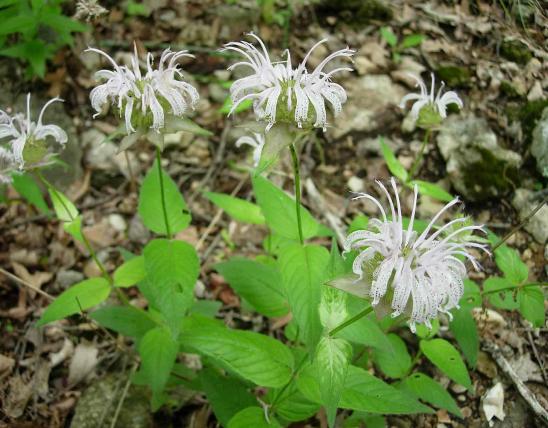
Perennial, usually unbranched, with finely hairy, square stems. Flowers in tight clusters toward the ends of stems, often with up to 4 clusters stacked atop one another; beneath each cluster is a whorl of oval, pointed bracts with hairy fringes. Flowers are typical of the mint family, with an upper lip and a 3-lobed lower lip; pale lavender with purple spots. Blooms May–August. Leaves soft, opposite, lanceolate to ovate with only a few soft teeth, usually sessile. All green parts have a mild, pleasant, minty scent. Basal leaves remain green all through the winter.
Similar species: Hairy wood mint (B. hirsuta) is usually branched; its leaves have petioles (leaf stems), many fine teeth, and long, spreading hair. It blooms May–September and grows in cool places, ravines, and wooded slopes statewide. Mints in the genus Monarda (horsemint, wild bergamot, beebalm) look rather similar, too.
Height: to 3 feet.

Absent from the western third of the state, though it can be cultivated statewide.
Habitat and Conservation
Occurs in rich open woods, glades, valleys and ravines, borders of woods, old fields, and along roadsides. This species prefers open areas, despite its name: “wood mint” is a name used for any plant in the genus Blephilia.
Status
When you see "horse" in the common name of a plant, it usually implies some degree of coarseness or largeness, compared to the word it's modifying. In this case, "horsemint" implies this is a lot larger and coarser than a lot of other mints, including the typical garden mint, which seem dainty in comparison.
Human Connections
Native Americans had several medicinal uses for this plant. Some people make a tea from the leaves, though the flavor is said to be pretty mild. This species is used in native wildflower gardening.
Ecosystem Connections
Bees, butterflies, and other insects are attracted to the flowers, and a variety of other insects eat the foliage. Not many mammals eat this plant, however.





























